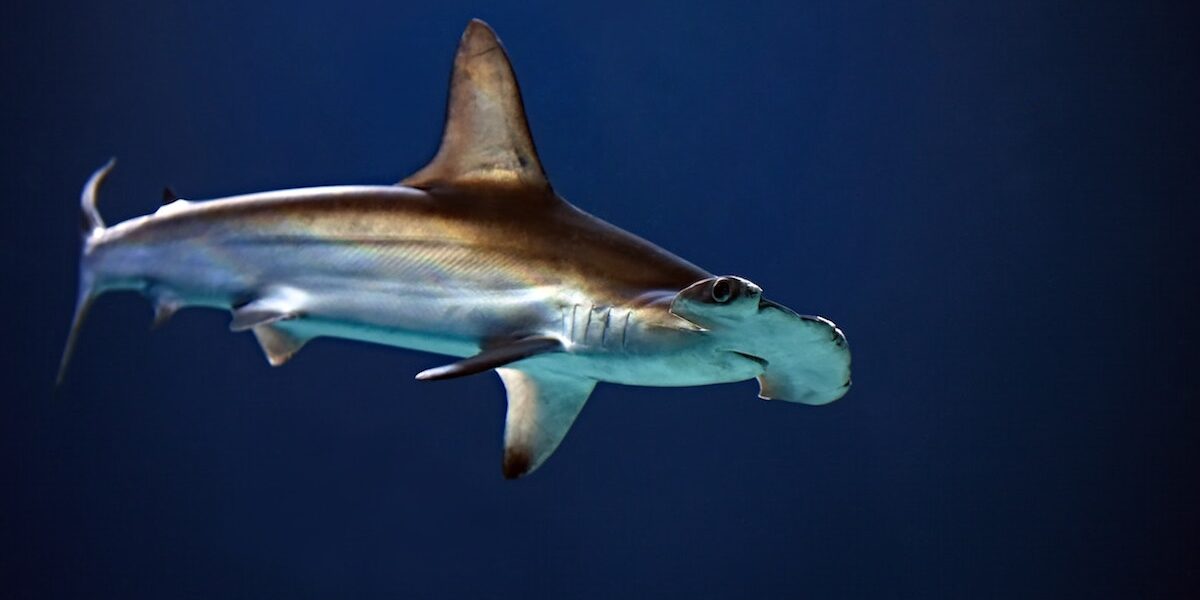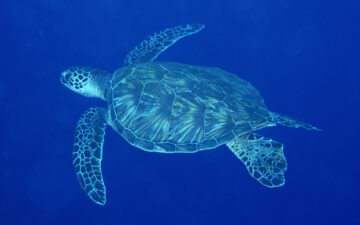Shark Advocates International (SAI) is excited about starting our second full year as a project of The Ocean Foundation (TOF). Thanks to TOF, we are well poised to ramp up our efforts to safeguard sharks and rays in 2012.
We’re building upon many rewarding achievements in which we played a part in 2011, including manta ray protection under the Convention on Migratory Species, the first international conservation measures for Atlantic silky sharks, a greatly reduced international quota for skates in the Northwest Atlantic Ocean, international protection for oceanic whitetip sharks in the Eastern Tropical Pacific, and protections for porbeagle sharks in the Mediterranean.
The coming months also bring lots of possibilities for improving the conservation status of vulnerable sharks and rays. SAI will be focusing on collaborative efforts to prevent overfishing, unsustainable trade, and finning through a variety of local, regional and global bodies.
For example, 2012 will be a big year for conservation of hammerheads, among the most threatened of the highly migratory sharks. Aimed at strengthening US Atlantic hammerhead limits, I will continue to participate in meetings of the National Marine Fisheries Service (NMFS) Highly Migratory Species Advisory Panel where the government’s options for rebuilding hammerhead populations will be developed over the course of this year. SAI has called for hammerhead sharks (smooth, scalloped, and great) to be added to the federal list of prohibited species (meaning possession is banned). At the same time, because hammerheads are exceptionally sensitive species and tend to die easily and quickly when caught, it is imperative that other measures are also researched and implemented to prevent hammerhead capture in the first place, and to improve the chances that caught and released hammerheads survive.
Hammerheads also make good candidates for listing under the Convention on International Trade in Endangered Species (CITES) because the fins of these species are highly valued and globally traded for use in traditional Chinese shark fin soup. The US developed a hammerhead listing proposal (aimed at improving tracking of international hammerhead trade) for the last CITES conference in 2010, but did not win the 2/3 majority of votes from other countries that is required for adoption. SAI has been cooperating with Project AWARE Foundation to urge the US government to continue the effort to restrict hammerhead trade through a proposal for the 2013 CITES conference. SAI will take advantage of various upcoming opportunities to comment on US priorities for CITES proposals, highlighting the plight of hammerheads and other shark species. Final decisions on U.S. proposals for CITES are expected by the end of the year. In addition, we will work with a variety of international conservation groups to encourage CITES listing proposals from other countries for other threatened, highly-traded species such as spiny dogfish and porbeagle sharks.
This year will also bring the final battles in a long fight to strengthen the European Union (EU) ban on shark finning (slicing off a shark’s fins and discarding the body at sea). Currently the EU finning regulation allows permitted fishermen to remove shark fins at sea and land them separately from shark bodies. These loopholes seriously hamper enforcement of the EU finning ban and set a bad standard for other countries. SAI is working closely with the Shark Alliance coalition to encourage EU fishery ministers and members of the European Parliament to accept the European Commission’s proposal to require that all sharks be landed with their fins still attached. Already in place for most US and Central American fisheries, this requirement is the only fail-safe way of determining that sharks were not finned; it can also lead to better information on shark species taken (because sharks are more readily identifiable to species level when they still have their fins). The vast majority of EU Member States already prohibit shark fin removal at sea, but Spain and Portugal – major shark fishing countries – are sure to continue to put up a good fight to maintain exceptions. A “fins attached” rule in the EU would improve the chances for success of US efforts to strengthen international finning bans in this way and could therefore benefit sharks on a global scale.
Closer to home, SAI is growing increasingly concerned and active with regard to growing and yet unregulated fisheries for “smooth dogfish” (or “smooth hound) sharks off the Mid-Atlantic states. The smooth dogfish is the only US Atlantic shark species which is being targeted without overall fishing limits. Unlike most other commercially fished sharks in the region, smooth dogfish have also yet to the subject of a population assessment that would determine safe catch levels. Atlantic state managers backed off on plans to restrict catches after the fishing industry objected. The first federal limits to cap the fishery were scheduled to take effect this month, but have since been postponed due in part to delays in implementing the Shark Conservation Act, which includes language that might lead to exceptions for smooth dogfish. In the meantime, landings of smooth dogfish are increasing and fishermen are demanding that any future limits be raised beyond what was previously agreed. SAI will continue to raise our concerns with state and federal fishery managers with the immediate goal of basic catch restrictions while the population is assessed.
Another vulnerable Mid-Atlantic species of concern to SAI is the cownose ray. This close relative of sharks is the subject of a seafood industry campaign known as “Eat a Ray, Save the Bay” which capitalizes on hotly disputed scientific claims that the US Atlantic cownose ray population has exploded and poses a threat to more valuable species, such as scallops and oysters. Fishery proponents have convinced many that eating cownose (or “Chesapeake”) ray is not only a great new sustainable activity, but also an environmental responsibility. In reality, cownose rays usually give birth to just one pup per year, making them especially susceptible to overfishing and slow to recover once depleted, and there are no limits on cownose ray catches. While scientific colleagues work to refute the study that led to many misconceptions about cownose rays, SAI is focused on educating retailers, managers, and the public about the vulnerability of the animal and the urgent need for management.
Last, SAI is involved in a variety of activities aimed at studying and minimizing incidental take (or “bycatch”) of particularly vulnerable sharks and rays, such as sawfish, oceanic whitetips, and manta rays. I’m participating in several committees and working groups that serve as great opportunities to discuss pressing bycatch issues with scientists, fishery managers, and conservationists from all over the world. For example, I’m proud to be a new member of the International Seafood Sustainability Foundation’s Environmental Stakeholder Committee through which I can encourage support for specific improvements to the international shark fishing policies of the various regional fishery management bodies for tuna. I remain a long-standing member of the US Smalltooth Sawfish Recovery Team which, among other things, aims to quantify and minimize sawfish bycatch in US shrimp fisheries. This year, members of sawfish team will be joining other experts from the International Union for Conservation of Nature Shark Specialist Group to develop a global action plan for sawfish conservation.
SAI appreciates the opportunities that the US government grants conservationists and other stakeholders to discuss and help formulate national and international shark and ray policies. I hope to continue to serve on US advisory committees and delegations to relevant international fisheries meetings. SAI also plans to continue to work closely with colleagues from Project AWARE Foundation, Wildlife Conservation Society, Shark Trust, World Wildlife Fund, Conservation International, Humane Society, Ocean Conservancy, and TRAFFIC, as well as scientists from the American Elasmobranch Society and European Elasmobranch Association. We remain deeply appreciative for generous support of our “keystone contributors” including the Curtis and Edith Munson Foundation, the Henry Foundation, the Firedoll Foundation, and the Save Our Seas Foundation. With this support and help from people like you, 2012 can be a banner year for safeguarding sharks and rays near you and around the world.
Sonja Fordham, SAI President





